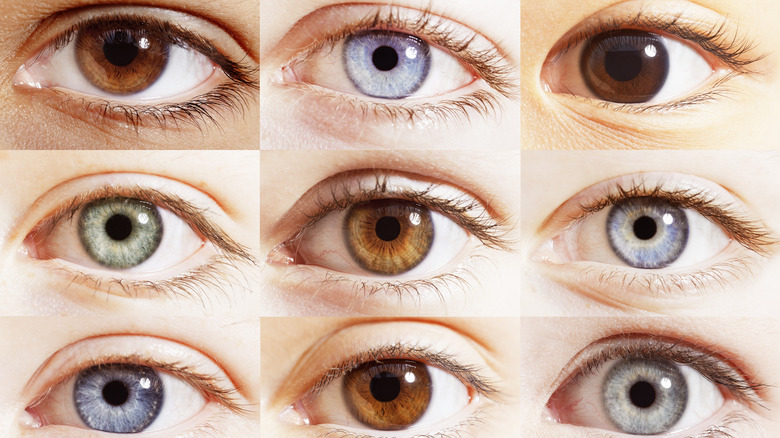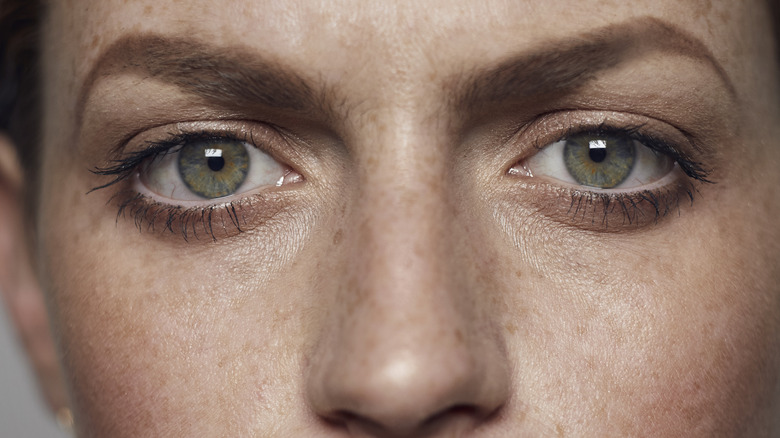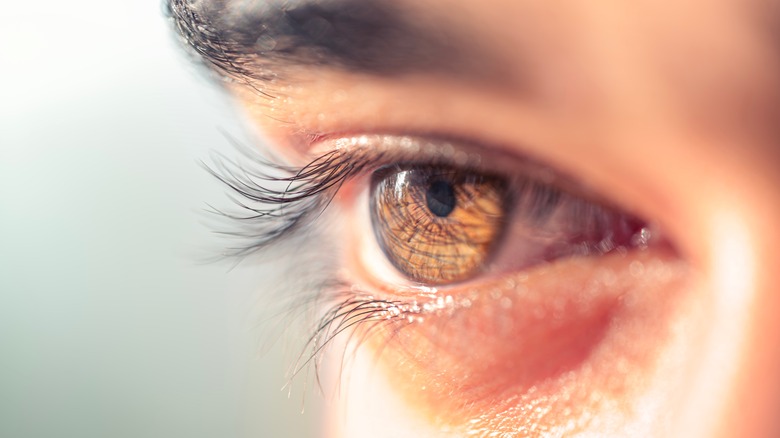Optometrist Breaks Down The Rarest Eye Colors In The World
Though there are only a handful of possible human eye colors, the shade of a person's irises can make a huge difference to their overall look. Certain striking hues often end up being a person's most standout feature (just try to imagine Rihanna without thinking of her hazel eyes!), especially when paired with complementary eyeshadow shades. While common colors like brown are beautiful in their own right, the rarest eye colors are guaranteed to turn heads — with or without makeup. To find out which tones are the rarest, we spoke exclusively to Dr. Jen Wademan, optometrist, eye health contributor, and owner of Bidwell Optometry in Folsom, California.
"Red and violet are extremely rare and usually seen in people with albinism," Dr. Wademan reveals. Beyond these exceptionally rare colors, the least frequently seen hues are amber, gray, and green. "It's estimated that around 5% of world's population has amber, less than 1% gray, and 2% green eyes," Dr. Wademan adds. Interestingly, the optometrist also notes that, in some cases, your eye color can actually change, but before we get into that, we first need to understand how eye colors come to be in the first place.
What determines eye color?
Ultimately, your eye color comes down to luck. The factors that determine the shade of your blinkers are unfortunately out of your control (unless you want to try for more glamorous eyes with colored contacts). "Eye color is determined by the amount and types of pigments in the iris — the colored part of the eye," says Dr. Jen Wademan. "There are two main pigments: melanin (brown) and lipochrome (yellow). It's the combination and concentration of these pigments that create the different eye colors that we see." In our exclusive conversation, Dr. Wademan shares that the unusual compositions of these two pigments are responsible for rarer eye colors. For example, those with higher levels of lipochrome and lower levels of melanin end up with amber or golden eyes.
In addition to the role of the pigments, the way that light enters and moves in the iris also impacts eye color. "This phenomenon, called Rayleigh scattering, is similar to and responsible for the blue color of the sky," Dr. Wademan says. "In our eye, as light enters, it scatters within the iris, and this influences the perceived color of our eyes, too." The optometrist adds that this occurs with light eye colors such as gray, blue, and green. "With brown eyes, the light is absorbed rather than scattered," she explains. These factors are predetermined and usually remain consistent, but there are certain situations where your eye color can change (without the use of colored contacts).
Are you stuck with your eye color?
The most notable time when eye color changes is in infancy; the majority of babies are born with lighter blue or gray eyes, but these get darker with the development of melanin as they age. However, adults can also experience a less dramatic change in melanin in the iris. "Certain health conditions, medications, or trauma can impact eye color," Dr. Jen Wademan explains exclusively to Glam. "For example, certain glaucoma medications, taken for a prolonged period of the time, can change the iris color." The optometrist adds that rare inflammatory conditions can lead to the iris lightening as it loses pigmentation. "Some patients may notice a light grayish ring around the iris, which can give the appearance of a lighter eye color. [H]owever, the iris is not changing," she says. "It's usually caused by a deposition of lipids around the iris and usually not cause for concern in someone older than 40 years old." That said, it's important to visit your eye-care provider if you notice color changes since they're often symptoms of underlying health conditions.
Beyond these conditions and specific situations, your eye color is generally the one that you'll have for life. The good news is that, rare or common, all eye colors are beautiful. Rather than trying to change the shade of your irises, embrace your natural gifts and experiment with makeup to make that color pop. For instance, green and purple bring out brown eyes spectacularly, while you can accentuate blue eyes with warm, peachy tones and smokey shadows.


